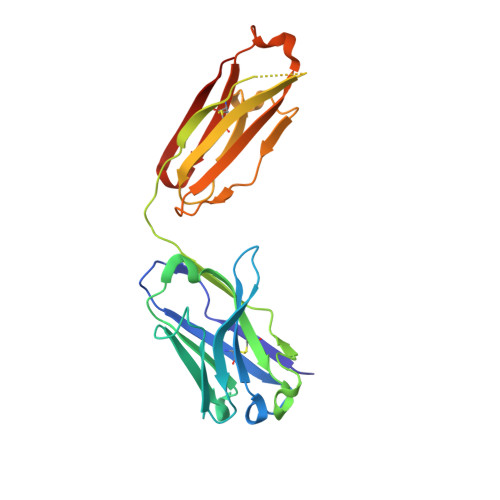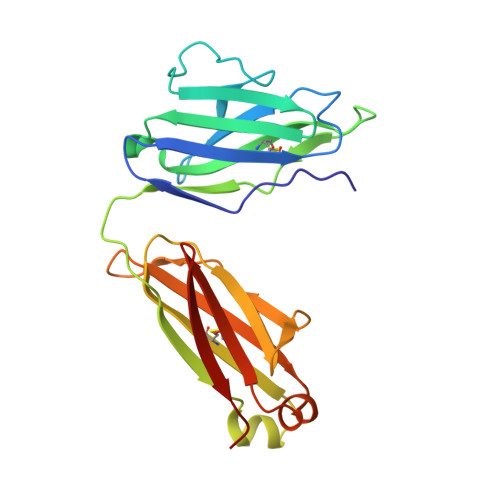Antibody Light-Chain-Restricted Recognition of the Site of Immune Pressure in the RV144 HIV-1 Vaccine Trial Is Phylogenetically Conserved.
Wiehe, K., Easterhoff, D., Luo, K., Nicely, N.I., Bradley, T., Jaeger, F.H., Dennison, S.M., Zhang, R., Lloyd, K.E., Stolarchuk, C., Parks, R., Sutherland, L.L., Scearce, R.M., Morris, L., Kaewkungwal, J., Nitayaphan, S., Pitisuttithum, P., Rerks-Ngarm, S., Sinangil, F., Phogat, S., Michael, N.L., Kim, J.H., Kelsoe, G., Montefiori, D.C., Tomaras, G.D., Bonsignori, M., Santra, S., Kepler, T.B., Alam, S.M., Moody, M.A., Liao, H.X., Haynes, B.F.(2014) Immunity 41: 909-918
- PubMed: 25526306
- DOI: https://doi.org/10.1016/j.immuni.2014.11.014
- Primary Citation of Related Structures:
4QF1 - PubMed Abstract:
In HIV-1, the ability to mount antibody responses to conserved, neutralizing epitopes is critical for protection. Here we have studied the light chain usage of human and rhesus macaque antibodies targeted to a dominant region of the HIV-1 envelope second variable (V2) region involving lysine (K) 169, the site of immune pressure in the RV144 vaccine efficacy trial. We found that humans and rhesus macaques used orthologous lambda variable gene segments encoding a glutamic acid-aspartic acid (ED) motif for K169 recognition. Structure determination of an unmutated ancestor antibody demonstrated that the V2 binding site was preconfigured for ED motif-mediated recognition prior to maturation. Thus, light chain usage for recognition of the site of immune pressure in the RV144 trial is highly conserved across species. These data indicate that the HIV-1 K169-recognizing ED motif has persisted over the diversification between rhesus macaques and humans, suggesting an evolutionary advantage of this antibody recognition mode.
Organizational Affiliation:
Duke Human Vaccine Institute, Duke University School of Medicine, Durham, NC 27710, USA. Electronic address: kevin.wiehe@dm.duke.edu.



















